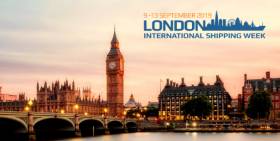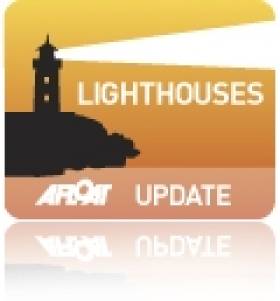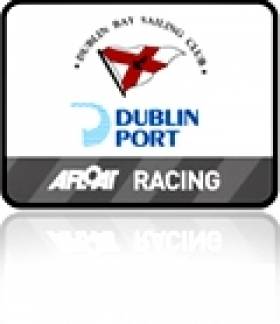Displaying items by tag: Granuaile
Able Seafarer (Deck) x 4 – ILV Granuaile
Would you like the opportunity to see the coast of Ireland from a different perspective?
If yes, then join the team at Irish Lights, onboard ILV Granuaile, as one of our Able Seafarers.
This is a unique opportunity for individuals with a marine background to work with the statutory body that maintains the aids to navigation, including offshore lighthouses and buoys, all around the Irish coast.
As an Able Seafarer, your duties will include shipboard maintenance, mooring operations, watch keeping and operating deck machinery. You will also work with cranes, winches, workboats and helicopter operations.
Ideally, you will have a valid Able Seafarer Deck Certificate (or be near to completion) together with deckhand experience on specialised vessels such as Aids to Navigation or Offshore Anchor Handling.
When you join us, we will provide you with the additional training required to undertake this particular role, and you will be supported throughout your career to reach your full potential as a Mariner.
An attractive salary (€29,690 rising to €36,375, based on experience and service), a time for time roster (4 weeks on/4 weeks off), and a generous pension scheme will be available to the successful candidates.
Please visit our website (www.irishlights.ie/who-we-are/vacancies) to view the Candidate Briefing Pack for more information about the role and how to apply by Friday, 26 May 2023.
We look forward to meeting with you to determine how you will support the Commissioners of Irish Lights to deliver on our mission of “Safe Navigation at Sea”
Commissioners of Irish Lights is an equal opportunities employer and promotes diversity in the workplace
Sea Scouts Visit Irish Lights Vessel Granuaile
The winners of the 2022 seamanship competition for senior Sea Scouts, supported by the Irish Institute of Master Mariners, recently got the opportunity to tour the ILV Granuaile as part of their prize. The young people were invited to learn about the vessel and the essential safety service provided around the coast of Ireland by the Commissioners of Irish Lights.
The Sea Scouts, from Malahide and Greystones, were welcomed onboard by Captain Dermot Gray and the crew. Captain Gray, Master of the ILV Granuaile, is also President of the Irish Institute of Master Mariners.
 (Above and below) The winners of the 2022 seamanship competition for senior Sea Scouts got the opportunity to tour the ILV Granuaile as part of their prize
(Above and below) The winners of the 2022 seamanship competition for senior Sea Scouts got the opportunity to tour the ILV Granuaile as part of their prize

To win their place, the young people had demonstrated their knowledge and abilities in a comprehensive examination of navigation skills, practical boat handling and seamanship in March 2022 at 1st Port of Dublin Sea Scout den in Ringsend.
The competition draws examiners from across the marine community including ships’ officers, lifeboat volunteers and experienced recreational boaters. In 2022 it also featured a presentation to participants on weather forecasting from Met Eireann. It provides young people in Sea Scouting with a unique opportunity to engage directly with a diverse range of professionals connected with the nautical sphere at a time in their lives where some may be considering a career at sea.
The 2023 competition will take place in March at the National Maritime College of Ireland, Ringaskiddy, thanks to the continued support of the Irish Institute of Master Mariners, who have supported this competition for older Sea Scouts since 1995.
Irish Continue Presence on Banks of the Thames During London International Shipping Week
Following a recent re-enactment to retrace Granuaile, the Irish Pirate Queen's voyage from the west of Ireland to London where she met the Virgin Queen in 1593, the Irish will again be present in the UK capital as part of a major maritime event next week, writes Jehan Ashmore.
The event is the London International Shipping Week (9-13th Sept.) though only first held in 2017, LISW returns to the Thames and is regarded as one of the largest maritime events in the world. During the week, major announcements will be made by industry and government on the future of the UK’s £40bn maritime sector.
Aptly a present day Royal link is connected also with maritime matters as Princess Anne is to launch LISW19 along with senior British Cabinet ministers including Minister for Maritime, Nusrat Ghani MP, when they officially welcome 500 of the world’s leading maritime executives, diplomats and heads of government.
Among the packed-filled event programme of seminars, conferences and receptions is the LISW19 International Maritime Cluster Round Table Debate which is to be sponsored by the Irish Maritime Development Office. The IMDO is an Irish government office which provides support to national and international maritime businesses in Ireland in addition the agency works to provide independent advice and guidance on EU funding initiatives.
The LISW debate will involve maritime clusters represented from those in the UK, Singapore, Monaco, Hong Kong, US, Ireland, Norway, Greece, Cyprus and Malta. Leaders of these maritime clusters from around the world will discuss and debate key issues facing the way clusters operate independently. In addition the debate will provide an opportunity as to how they can improve cooperation between themselves.
Following the debate and discussion session will be lunch held on Wednesday (11th Sept.) at the offices of Norton Rose Fulbright, 3 More London Riverside. The morning invitation only held event has a target audience representing shipowners, managers, brokers, insurance related businesses, ports, regulators and financial services. For further information about LISW19, this can be found on the event's dedicated website here and event guide.
The venue of London Riverside as the name suggests is within sight of Tower Bridge, Pool of London where the re-encactment of Granuaile (Grace O'Malley) voyage (as alluded above) took place at the historic setting of the Pool of London. Afloat will have more from this tourist attraction during the course of the event week.
Completion of the re-enactment trip to the UK capital involved ocean-race boat, Believe in Grace which was solo sailed by Joan Mulloy from County Mayo, whose ancestor was Grace of Malley also known as the Pirate Queen of Mayo.
Arklow Newbuild’s Link to Former Irish Lights Tender
#FORMER IRISH LIGHTS TENDER -With the Guardian 8 preparing to set sail from her builders homeport of Arklow this month, as previously reported on Afloat.ie, her owners Gardline Marine Services also operate a former Commissioners of Irish Lights tender, writes Jehan Ashmore.
The Great Yarmouth based company operate a multi-purpose fleet which includes the survey vessel Ocean Seeker (PHOTO). She was a familiar sight as the ILV Granuaile (1970/1,943grt) while serving for three decades from the Irish Lights marine depot in Dun Laoghaire Harbour.
Built by Fergusan Brothers of Port Glasgow, she was the last traditional tender for CIL in that her working deck was positioned forward. Apart from the short career of the Gray Seal, the 2000 built successor ILV Granuaile (the third to carry the name of the Mayo pirate queen) was the first custom built tender for CIL to introduce a radical design with an aft end work deck.
First Dublin Bay Sailing Club Race Abandoned Due to Lack of Wind
It would not have been a problem if the 80-metre Irish Lights Vessel Granuaile moored in Scotsman's Bay was the only obstacle for the Dublin Bay Sailing Club (DBSC) fleet to overcome tonight. It was obvious though – as soon as the first guns sounded – there were bigger issues for course setters as the evening's timid easterly breeze started to die.
As the flags drooped on DBSC's Spirit of the Irish committee boat shorter courses were set for the 17 classes – and 200 or more competing boats – but to no avail, the fickle light wind was not going to hold out.
As the Dragon and SB3 classes started their race it was apparent that even the fetch from the back of the East pier to East mark was going to be a big ask with such adverse tide.
After all but one of the white sail fleet failed to cross the start line the Race officer was forced to rule them out of time.
Even though it looked like there was breeze out beyond the Burford bank there was nothing in the inner bay area; crews sat to leeward, spinnakers collapsed and the first race of the 128th DBSC sailing season was abandoned.































































